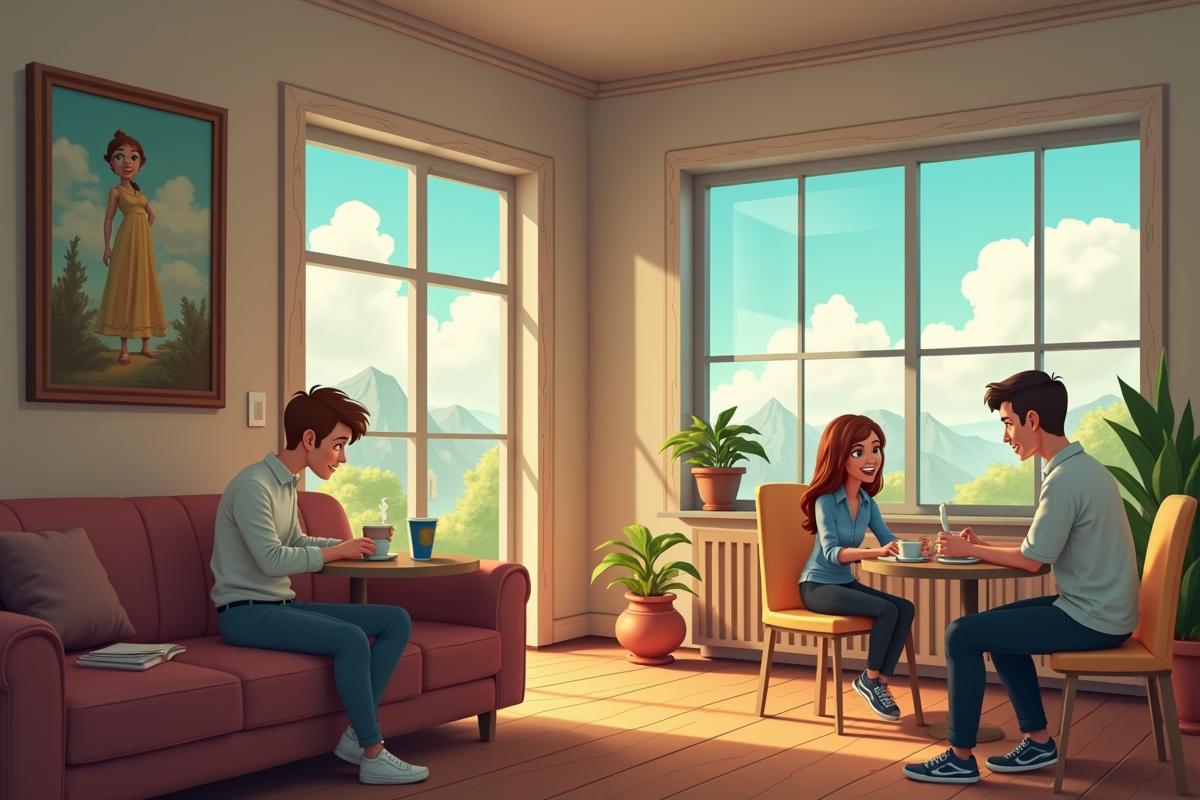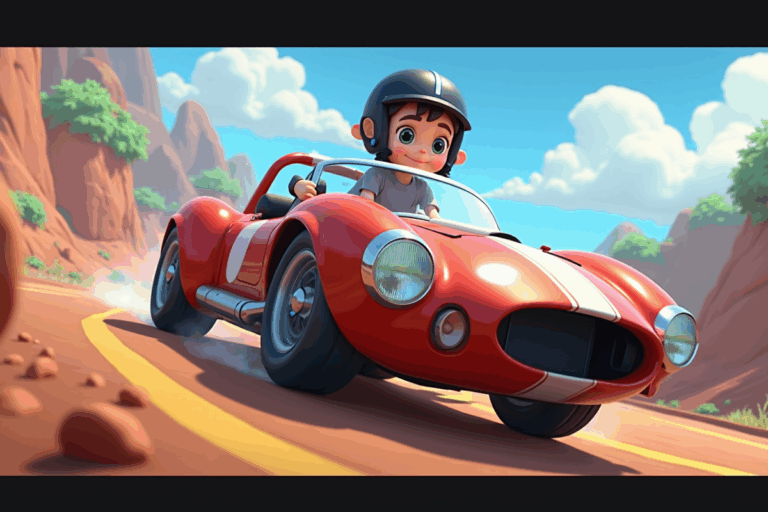2 Dimensional Cafe – Exploring the Art, Experience, and Global Trend
2 Dimensional Cafe – Exploring the Art, Experience, and Global Trend reveals how the black-and-white, comic book-inspired dining concept has evolved from its Seoul origins in 2017 to a global phenomenon. With recent openings such as Shirokuro in New York City and Temakeria in Dallas, these immersive spaces merge striking 2 dimensional cafe interior design with innovative culinary experiences, transforming ordinary meals into Instagrammable moments.
The rapid spread of the 2D cafe trend is not just reshaping restaurant decor but also impacting local neighborhoods and tourism. Viral social media exposure, artistic collaborations, and unique sketchbook style dining experiences have propelled these cafes into cultural hotspots—extending their reach from major cities like NYC to smaller communities such as Riverview, Canada.
As more venues embrace this artistic movement, the conversation expands beyond aesthetics to include community revitalization and new business strategies.
| Key Location | Opening Year | Unique Features |
|---|---|---|
| New York City (Shirokuro) | 2025 | Full black-and-white 2D decor, omakase menu, viral social media presence |
| Dallas (Temakeria) | 2023 | Comic book-style interior, sushi hand rolls served taco-style, local artist collaboration |
| Riverview, Canada | 2025 | Sketchbook-inspired design, immersive art experience |
2 Dimensional Cafe – The Global Trend Redefining Dining
The 2 dimensional cafe trend continues to reshape the dining scene in 2025, captivating food lovers and design enthusiasts worldwide. These cafes transform ordinary spaces into interactive works of art, where every wall, chair, and tabletop looks as though it was pulled straight from a sketchbook or comic strip. The result is an immersive, black-and-white world that blurs the line between reality and illustration.
This artistic approach does more than just create Instagrammable moments—it redefines how guests experience their meal. From New York City’s Shirokuro omakase to Dallas’s Temakeria and Brooklyn’s Kravings Kafe, each 2D cafe puts its own spin on the concept, offering unique menus that match their bold interiors. These establishments have become neighborhood landmarks and tourist magnets, sparking local revitalization while gaining global attention through viral social media posts.
What is a 2 Dimensional Cafe?
A 2 dimensional cafe is a dining space designed to mimic the look of hand-drawn art. Using precise painting techniques, thick outlines, and a monochrome palette—usually black-and-white—these cafes create an optical illusion that makes furniture and decor appear flat, as if rendered in ink or pencil. Every detail, from floor patterns to window frames, is carefully crafted to maintain this illusion.
The effect transports guests into a life-sized comic book or graphic novel. The immersive setting transforms even simple meals into memorable experiences. It’s not just about aesthetics; the playful environment encourages creativity and conversation, making these cafes popular destinations for date nights, gatherings with friends, and content creators seeking visually striking backdrops.
Origins and International Spread of the 2D Cafe Concept
The first 2D cafe opened in Seoul in 2017, quickly capturing attention for its innovative approach to restaurant design. Its instant popularity inspired entrepreneurs across Asia to experiment with similar interiors. As social media posts showcasing these whimsical spaces went viral, the trend caught fire internationally. By 2023 and beyond, major cities like New York City saw openings such as Shirokuro—a fully immersive omakase spot—and Brooklyn’s Kravings Kafe.
Dallas joined the movement with Temakeria’s distinctive sushi experience designed by local artists. The concept has now spread beyond large cities; new openings in places like Riverview, Canada demonstrate its growing appeal in smaller communities. This global momentum has cemented the 2D cafe as both an artistic statement and a powerful tool for neighborhood revitalization.
VFXB Fact Nugget
The world’s first permanent 2D cafe opened in Seoul in July 2017—Café Yeonnam-dong 239-20—using only black marker on white surfaces to achieve its signature hand-drawn comic book look.
Inside the 2D Cafe Experience
Stepping into a 2D cafe feels like entering the pages of a comic book. The entire space—walls, floors, furniture—is covered in intricate black-and-white linework. This design creates a playful illusion that blurs the boundary between reality and art. The trend, which began in Seoul, has inspired artists and restaurateurs worldwide to reimagine what a dining environment can be.
In 2025, new venues like Shirokuro in New York City and recent openings in Canada and Dallas show how this trend continues to evolve. Each location brings its own flair while embracing the essential sketchbook style. Guests are not just diners—they become characters within a living illustration, making each visit unforgettable.
Artistic Design and Techniques Behind the Illusion
Creating the signature 2D effect requires more than just painting lines on walls. Artists meticulously plan each element to maintain perspective and depth from every angle. At Temakeria in Dallas, designer Jonathan Krown used custom stencils and hand-drawn accents for authenticity. Materials are chosen for durability as well as their ability to absorb or reflect light in ways that enhance the cartoonish aesthetic.
Artists often collaborate with interior designers to balance functionality with visual impact. Even chairs, plates, and utensils may get the graphic treatment for consistency. This attention to detail transforms ordinary spaces into immersive works of art that draw crowds and critical acclaim.
Menu Highlights and Unique Offerings
The menu at a 2D cafe is as curated as its visuals. Shirokuro’s omakase experience features delicately plated sushi that contrasts beautifully with the monochrome setting—each dish pops against its illustrated backdrop. In Dallas, Temakeria serves creative 2D sushi rolls and Japanese-inspired bites designed for visual drama as well as taste.
Beverage presentations are equally inventive; think frothy lattes served in comic-style mugs or desserts styled to look like sketches come to life. Many cafes rotate specialty items or collaborate with local artists for limited-edition treats, keeping regulars excited for each new visit.
The Role of Social Media and Virality
Social media is at the heart of the 2D cafe phenomenon. Instagrammable interiors drive foot traffic as visitors share their experiences online. Viral videos of Shirokuro’s immersive environment have introduced countless new fans to the concept since its April 2025 debut. Cafes encourage user-generated content by designing photo-friendly spaces with clever backdrops and props.
Hashtags like #comicbookcafe or #sketchbookdining amplify reach beyond local neighborhoods, attracting tourists and influencers alike. This organic buzz helps these unique spots become destination restaurants almost overnight.
Community Impact and Cultural Significance
The arrival of 2D cafes in cities like New York, Dallas, and even smaller communities such as Riverview is redefining neighborhood identity. These immersive spaces, inspired by comic book style restaurant decor and sketchbook dining experiences, have become catalysts for urban revitalization. Their playful aesthetics and Instagrammable interiors attract both locals and tourists, creating fresh foot traffic for surrounding businesses and helping formerly quiet streets thrive again.
Beyond their visual novelty, these cafes foster a sense of belonging by offering unique communal experiences. Patrons share their visits across social media platforms, amplifying the buzz and drawing visitors from outside the immediate area. This organic promotion not only spotlights the best 2D cafes in NYC or Dallas but also establishes these venues as cultural landmarks that reflect contemporary tastes.
As the trend spreads internationally from its Seoul origins, each 2D cafe adapts to its community’s character while contributing to global dialogue on design innovation. Their impact goes beyond aesthetics; they help energize local economies, inspire artistic collaborations, and become touchstones for cultural exchange.
Revitalizing Neighborhoods and Attracting Tourism
The launch of Shirokuro in New York City demonstrates how 2D cafes can transform neighborhoods almost overnight. Viral social media coverage has turned it into a must-visit destination for both residents and visitors seeking Instagrammable restaurants in 2025. The influx of patrons spills over to nearby shops and services, breathing new life into areas that may have previously struggled with foot traffic.
In smaller towns like Riverview, Canada, the opening of a 2D café signals a shift toward creative placemaking outside major metropolitan centers. These venues become focal points for community engagement—hosting events, art shows, or collaborations with local businesses—that further stimulate economic activity while giving residents renewed pride in their neighborhood.
Expert Insights from Designers and Restaurateurs
Industry leaders emphasize the intricate process behind crafting a compelling 2 dimensional cafe interior design. Jonathan Krown, who designed Temakeria’s space in Dallas, highlights how hand-drawn lines and custom materials create the illusion of stepping inside a graphic novel—a detail that resonates with diners long after they leave.
Alexa Rodarte notes that successful 2D cafes depend on more than just artistic flair; collaboration between designers, restaurateurs, and local artists is key to ensuring authenticity and ongoing relevance. Restaurateurs leverage this synergy to develop menus that complement the visual experience—like omakase at Shirokuro—offering guests a fully immersive escape that blends culinary artistry with innovative design.
Common Questions
What is a 2 dimensional cafe?
A 2 dimensional cafe is a themed cafe where the interior—including furniture, walls, and decor—is designed in black and white with hand-drawn outlines to create the illusion of stepping into a flat, cartoon-like or sketchbook world, making everything appear two-dimensional.
Where did the 2D cafe trend originate?
The 2D cafe trend originated in Asia, particularly with early examples in Tokyo, Japan, and Seoul, South Korea, before spreading to other parts of the world.
Are there any 2D cafes in the United States?
Yes, there are several 2D cafes in the United States, including locations in St. Petersburg, Florida, Orlando, and Los Angeles, each designed to mimic the two-dimensional comic or sketch style.
What kind of food do 2D cafes serve?
2D cafes typically serve a variety of desserts, bubble teas, coffee, milk tea, juices, and sometimes international sweet treats, with the food itself usually presented in vivid colors rather than monochrome.
Why are 2D cafes popular on social media?
2D cafes are popular on social media because their unique, immersive, and highly photogenic interiors create striking visuals that resemble living inside a drawing or comic book, making them ideal for sharing online.
How are 2D cafes designed to look two-dimensional?
2D cafes achieve their look by using monochrome color schemes—primarily white surfaces with bold black outlines—on walls, furniture, and decor, often hand-painted to mimic the style of a sketch or cartoon drawing.
2 Dimensional Cafes aren’t just a fleeting Instagram trend—they’re reshaping how we experience art, food, and community. From the whimsical brushstrokes on the walls to creative menu twists, these spaces prove that dining can be immersive, innovative, and genuinely memorable.
Curious to see how 2D cafes keep evolving or want more behind-the-scenes insights? Keep exploring our website for up-to-date guides, expert opinions, and the latest news on everything related to the art, experience, and global impact of 2 Dimensional Cafes.


